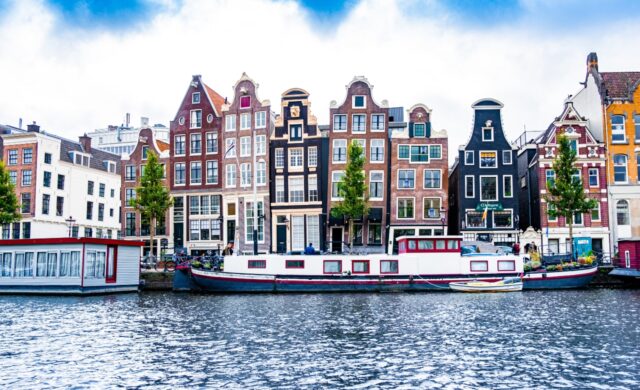There is scope to replicate the concept of the Ecuador debt-for-nature swap, according to Stefan Wandrag, who was the deal-lead for Climate Fund Managers.

It was a complicated deal, involving many public and private partners and taking more than 3 years to complete. But it was all worth it.
The Ecuador debt-for-climate swap, announced in early May, is the largest in history. The innovative approach to financing climate action and conservation exchanged $1.628bn in Ecuadorian government bonds for a $656m impact loan. At a discount of almost 60%, the transaction will generate savings to the Ecuadorian economy of $1.126bn through 2041, and will substantially reduce the country’s debt distress.
In return, Ecuador will direct savings of $323m to the conservation of the Galapagos Islands by 2041, one of the planet’s most important ecosystems, and establish a new endowment fund maturing to $227m to finance their preservation thereafter.
The conservation funds will protect the 60,000 km² Hermandad Marine Reserve, providing vital protection for marine life whilst also promoting sustainable fishing and tourism, enhancing ecosystem richness, and building resilience to climate change.
The funding will help to physically protect the reserve through traditional methods such as patrolling but also via technology including drone monitoring and satellite imagery. Targeted funding will back community development initiatives including programmes to support sustainable livelihoods, women’s economic empowerment, improved access to sanitation and waste management infrastructure, which will ultimately help to reduce the harmful impacts of pollution on the marine environment, and educational campaigns.
Private sector involvement
Climate Fund Managers (CFM), through its marine ecosystem venture Oceans Finance Company (OFC), was one of the key advisors in the transaction.
Alongside the Pew Bertarelli Ocean Legacy Project, it developed the concept to fruition, led on the financial structuring and invested $2m in early-stage development capital via its Climate Investor Two (CI2) Fund, a blended finance vehicle focused on oceans, water and sanitation.
The deal was made possible with support by Credit Suisse, which had already supported a similar deal in Belize last year. The Swiss bank, now part of UBS, acted as offeror for the international bonds. The US International Finance Corporation (DFC) provided a $656m political risk insurance for the loan, while the Inter-American Development Bank gave a $85m guarantee. A group of 11 private insurers provided more than 50% reinsurance to facilitate the project.

“There was quite a lot of interest from private investors in this deal”, says Stefan Wandrag at Climate Fund Managers. “The DFC guarantees makes it a very attractive risk.” According to him, the huge involvement from private parties makes this deal unique, compared to earlier debt conversions. “Debt swaps have existed for a number of years, but the innovation is this transaction is that it is almost entirely private sector structured and implemented. It’s also an innovative view from the government to partner with the private sector to solve these challenges.”
Now the new instrument has been put in place, the role of the private parties is largely finished. Responsibility for the programme in the coming years is in the hands of the newly established Galapagos Life Fund (GLF), which will be governed by an 11-member board of directors that includes five Ecuadorian government ministers and six non-government representatives, representing sectors like tourism, fisheries and the local communities, among others. The GLF will be supported by OFC and the Pew Bertarelli Ocean Legacy.
Future transactions
At the launch of the Ecuador debt-for-nature swap, Andrew Johnstone, CEO of CFM said that debt-for-climate swaps are a cutting-edge climate solution that make significant, sustainable impact in a single transaction. According to him, “the Galapagos conversion sets a new precedent which we are actively looking to replicate across our focus markets of Africa, Asia and Latin America”.
Wandrag confirms this. “We are very much encouraged as to the prospect of future transactions.” The mechanisms will differ, he says, but the market seems to be ready for this approach. “A number of market players have already contacted us with proposed transactions in various stages.” In fact, a new deal will probably be announced within a few weeks, he expects. “And more will follow. Most of them will not replicate the scale of the Ecuador transaction, but there is certainly scope to replicate the principles of it.”
A big challenge is to coordinate the many different parties involved. Wandrag adds: “The process can start once a government provides a commitment to conservation, and shares a clear idea of what they want to achieve in environmental terms as well the financial benefit in terms of repayment of their outstanding debt stock. The key thing then is to get all parties involved aligned on these conservation goals. You have to insure that there is 100% clarity and common understanding of the conservation commitments that they are signing up to, as well as the conservation impact that is to be realised. Financing is relatively simple to put in place once you’ve got this building block in place. If you have agreed on the conservation commitments and impact, I think you can create this kind of transactions in less than 12 months.”





